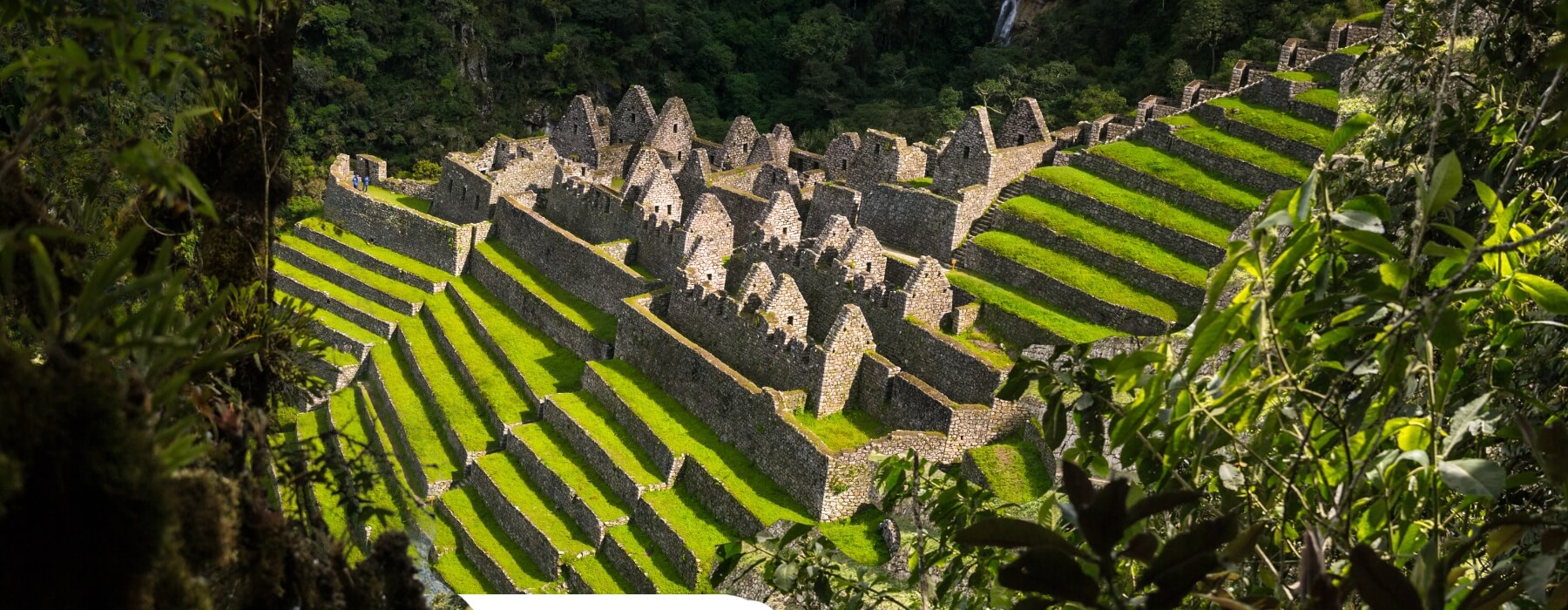
Since its discovery at the beginning of the 20th century, Machu Picchu has been considered one of the most amazing world destinations, being named year after year as one of South America’s top tourist attractions. However, while there has been much speculation about the founding of the ancient citadel, there are some enigmas and mysteries of Machu Picchu that remain in the air. The enigmas awakened by the Inca citadel captivate visitors and archaeologists from all over the world. In this way we can explain the mysteries of Machu Picchu, which have remained lost in time, and jealously guarded by the last Incas of Vilcabamba, who protected this unique place, and thereby prevent its destruction by the invaders from Spain.
Due to its proximity to the city of Cusco, some archaeologists assume that it was used as a rest palace for the city’s nobles. Others argue that it was an area built to test cultivation. Certainly too many theories have been discussed since it was first seen by explorers from the prestigious National Geographic Magazine, which financed one of the first scientific expeditions in 1911, led by explorer and Yale University professor Hiram Bingham. The sacred citadel of the Incas was empty and without many artifacts for its theoretical study, which is why probable hypotheses have been inferred based on the other studies of the archaeological centers that are located nearby.
Basically the biggest objective that researchers have been pursuing to this day is where the famous lost city of the Incas is really located, which many call El Dorado, since it is believed; It is there that the Incas have taken all their treasures, which were hidden from the invadres, and it is also thought that this fabulous sacred space is yet to be discovered, in the depths of the jungles of Cusco. Here we have compiled all the enigmas and questions that all visitors ask when they visit the Inca sanctuary of Machu Picchu.
Documents from the 16th century say that it was erected by Pachacutec to commemorate his military exploits. Anthropologists Susan Niles and María Rostworowski estimate that, in addition to being the administrative center of this king, it was also a place of worship. A study has established that Machu Picchu is older than previously thought, calling into question the accepted chronology of the Inca empire. A group of researchers from various American universities has carried out a study of the human remains found in Machu Picchu, the famous Inca citadel. The results reveal that the site is at least thirty years older than previously believed, a small but notable difference since it calls into question the accepted chronology for the development and expansion of the Inca empire.
The dating has been carried out with accelerator mass spectrometry, a very precise technology that had not yet been used in Machu Picchu. The results indicate that the citadel was in use at least since 1420, although it is unknown whether the human remains analyzed belonged to a settler or a builder. This contradicts the chronology according to which Machu Picchu was built around 1450 at the request of the Inca Pachacutec after his conquest of the Urubamba Valley. The analyzes of the remains found determine a permanent occupation of the citadel from 1420 to 1530, the estimated date on which the civil war for the throne began that would end with the fall of the Inca empire.
Until now, estimates of the age of Machu Picchu and the duration of its occupation were based on contradictory historical accounts written by the Spanish in the period after the Spanish conquest,” says Richard L. Burger, lead author of the research. This is the first study based on scientific evidence to provide an estimate of the founding of Machu Picchu and the duration of its occupation, giving us a clearer picture of the origins and history of the site.
The results have several possible interpretations, but they all imply some error in the history of the Inca empire that was believed to be correct. The most plausible would be that Pachacutec came to the throne before the estimated date -1438- and also began his conquests years before what was thought; Consequently, the Inca empire would also be older, since its foundation – it was previously one of many Andean kingdoms – coincides with the reign of Pachacutec. This theory is reinforced by analyzes of the ceramics found in Machu Picchu, which do not include any pre-imperial style objects; That is, there is no evidence that the citadel was built before the Inca conquest.
Consequently, for now it must be assumed that the error is in the date of Pachacutec’s reign indicated in the chronicles of the Spanish conquistadors. This would imply not only that the Inca empire lived at least thirty years longer than previously thought, but that some of its rulers had longer reigns or even that emperors of whom we do not know could have existed.

At the beginning of the 15th century, one of the largest empires in South America began to emerge. The warrior people of the Incas had disputed hegemony to control the vast territories of the Andes with the Chankas, who lived in the current region of Ayacucho, and They were limited by the Apurimac River. Thus, the Inca rulers are an amlagama of several peoples who had settled in the valley of Cusco, but around the year 1150 a climatic event of great proportions occurred on the Pacific coast, which had overheated its waters, and that had harsh effects on the inhabitants of Lake Titicaca, who in search of a better standard of living, emigrate to Cusco. Over the following years these families make alliances with peoples such as the Canas, Canchis, Phoques, Sawasiras and Antasayas; After more than 100 years, the dynasty of the Inca kings emerged, who had already managed to conquer many territories in southern Peru.
According to the stories collected by Spanish and indigenous chroniclers, one of the first kings who achieved the greatest Andean alliance would be Manco Capac, and succeeding him would come more than a dozen emperors, among which the most prominent would be the Inca Pachakuteq. , who together with his descendants and powerful generals, either through war or marriages of convenience, manages to expand the empire through the current territories of Peru, Colombia, Ecuador, Chile, Argentina and Bolivia. In this process of increasing the borders, around the year 1420, the Incas entered the Amazon space, perhaps a very unique place, since they had already managed to contact the Amazonian tribes, with whom they developed a successful exchange of products and goods. very high value, such as gold, coca leaves, medicinal plants, feathers, and cotton.
But, for Emperor Pachakuteq, this approach to trade with the Amazonian tribes represented a certain danger, in the sense that if total submission was not achieved, in the future it could have triggered a rebellion against the Incas. Thus, he sends an expedition full of Inca generals with soldiers to look for a safe and spacious space near the territories of the Antisuyo (Amazon jungle), when they arrive in these forests for the first time, they feel that they find a truly magical space, and on top of that of a mountain that is surrounded by the Vilcanota River, which supported its great value as a site of administration and political and economic control to colonize the tribes of the Amazon. Pachakuteq himself was the one who entered these territories to supervise the carrying out of the building works according to the patterns of Inca architecture, which was subject to the religious foundation.
Consequently, a primary aspect must be taken into account in the buildings of Inca cities, we are referring to water, since without it it would not be possible to develop economic and religious activities, to the delight of the Inca architects, this place had an endless supply. of water resources from the Machu Picchu mountain, which they prodigiously managed to capture through a water channel, maintains a standard flow throughout the year, sufficient to supply all the inhabitants who came to Machu Picchu. As a second argument we can only take into account the astronomical aspect, since this was planned once the trees and bushes of the jungle were freed. The best engineers and architects of the empire, along with hundreds of men, were sent to this site to model the landscape. These architects, along with astronomers and wise men, had to measure and observe every day how the main constellations and stars of the Inca calendar were positioned. Upon completion of this work, they expressed their ideas in a model of the work contemplated by the Inca emperor. Applying the most rigorous mathematical and physical calculations, they proceeded with the construction of its bases and supporting walls of the entire monument. We can certainly conclude that this civilization represents the great degree of advancement in technology in all fields, which surprises all of us who visit Machu Picchu to this day.
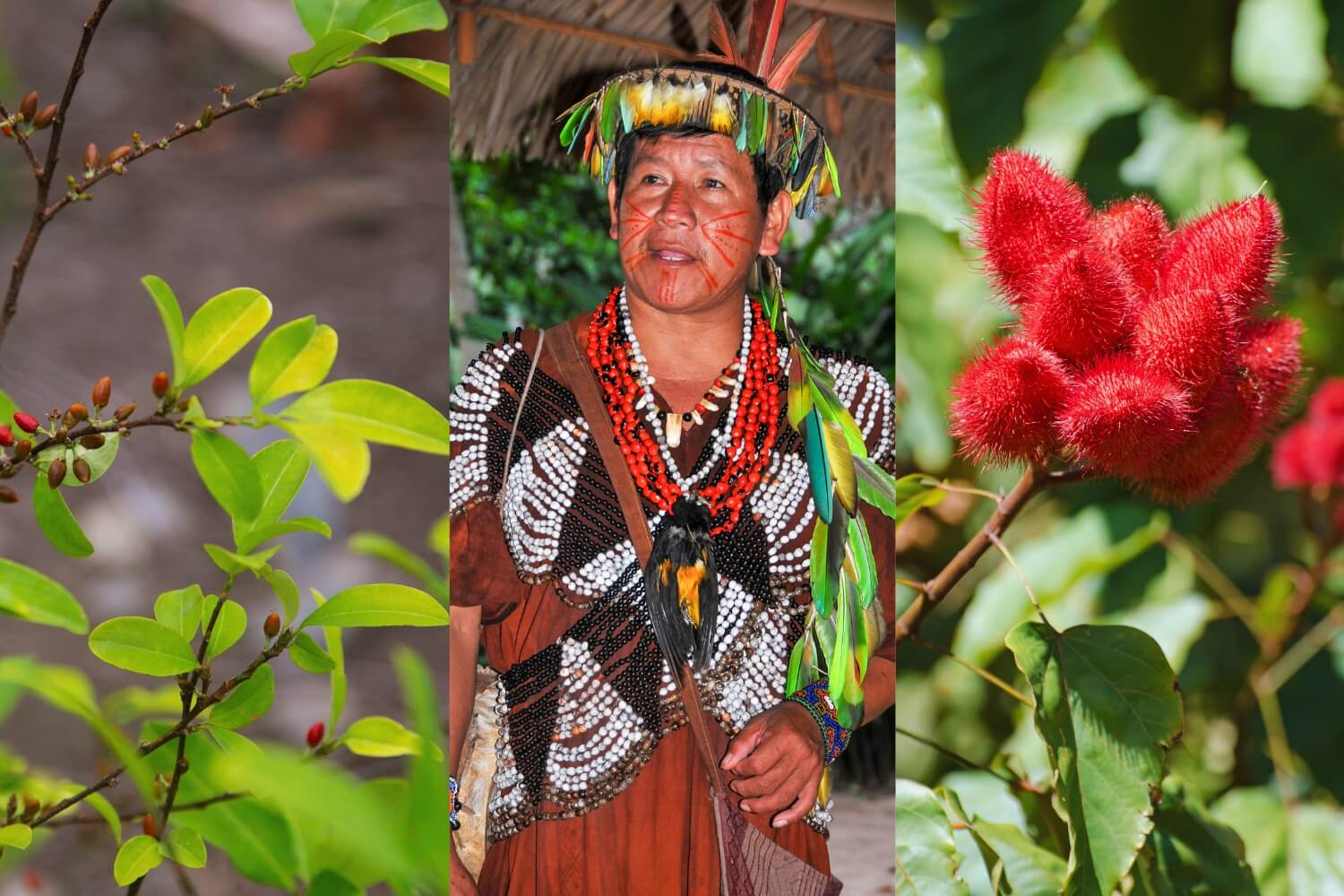
Bingham found objects made of stone, bronze, ceramics and obsidian, but neither gold nor silver, which, logically, must have existed. Are they still hidden there or have they been looted? Given this paradox, it is assumed that initially when the Inca citadel of Machu Picchu was abandoned when the conflict between the two heirs to the throne of the Inca empire broke out, we mean between Huascar and Atahuallpa, possibly part of the sacred objects would have been taken to the Inca cities of Vilcabamba and Choquequirao, some assume that they would have been taken to the sacred temple of Paititi, which is hidden to this day in the Amazon. We refer to all this given the fact that this civil war arose in the year 1530, two years before the arrival of the Spanish to Inca territory. The kingdom had been divided into two sides, both northerners and southerners wanting to take power over the Inca empire. Under this context, the forces of the Inca Atahuallpa under the command of General Quizquiz, Chalcuchímac and Rumiñahui managed to enter the city of Cusco, where they captured and murdered all the nobles and people from the families of the Inca Pachakuteq, at the end of such savagery they took them as prisoners. to the true successor to the throne of the Inca empire, to the city of Cajamarca.
Once he assumed absolute power over the entire empire, Atahuallpa ordered the burning and destruction of some Inca temples and palaces. In the year 1532, the hosts of the Spanish Francisco Pizarro managed to reach the beaches of Ecuador, where he gathered all the information about the Inca empire, and put together a strategy on how to get hold of all its riches. Atahuallpa being captured in November of the same year, he was held hostage, and in order to try to save himself from such punishment, seeing the desire of the Spanish for precious metals, he offered to give them two quarters full of silver and one of gold, as far as he could reach. his hand. Thus he orders his generals to go to the capital of the Inca Empire, and bring with them all the gold and silver objects that were in the sacred sanctuaries, such as the Inca citadel of Machu Picchu. On his return, Atahuallpa’s servants managed to gather the largest amount of gold objects, many of them of incalculable value. But even so the Inca was accused of treason and murder of his brother, executed under the bar.
After these events, the sacred site of Machu Picchu would have remained only under the administration of some families of the royal panaca of Pachakuteq, who were dedicated to the daily tasks of planting food and religious celebrations. Once the Spanish arrive in Cusco, a series of confrontations occur with the successors to the throne, among which the most notable would be the Inca Sayri Tupac, who together with his servants retreats to the site of Vilcabamba, where they manage to resist. the Spanish siege. Finally, in the year 1572, the last Inca Tupac Amaru I was captured, putting an end to more than 300 years of Andean civilization. This event marked the definitive abandonment of the inhabitants of Machu Picchu, and in just a couple of years the jungle would cover the Inca enclosures. Information emerges that the Spanish never had knowledge of this sacred place, because the indigenous people, when asked if there was another site richer in gold and silver than the temple of the sun in Cusco, responded with a NO. And therefore Machu Picchu was jealously protected from invaders for generations.
With the independence of the colonies from the Spanish Empire, large landowners emerged, who took advantage of their economic and political power to continue exploiting the inhabitants of the Andes. On their estates, many of the indigenous people were subjected to agricultural and livestock work, without receiving a salary. Some, even many of them, were taken to hostile territories such as those administered in Huaquiña and Mandor, two of the haciendas closest to Machu Picchu. In the mid-19th century, the existence of an Inca archaeological site in the mountains of the Torontoy and Cedrobamba valley was widely reported in the hamlets of the Sacred Valley and Cusco, but due to its rugged geography and the existence of dangerous vipers, almost no one knew. I dared to explore it; Only some intrepid Inca treasure hunters would have arrived about 60 years before Hiram Bigham did in 1911. These characters who were known in the black markets of collectors of items from Pre-Hispanic cultures, such as Huaqueros, would have repeatedly exfoliated the few valuable elements left by the Incas in Machu Picchu. Given the aforementioned hypotheses, part of the answer is given, why the excavations carried out in Machu Picchu have recorded almost nothing of gold and silver.
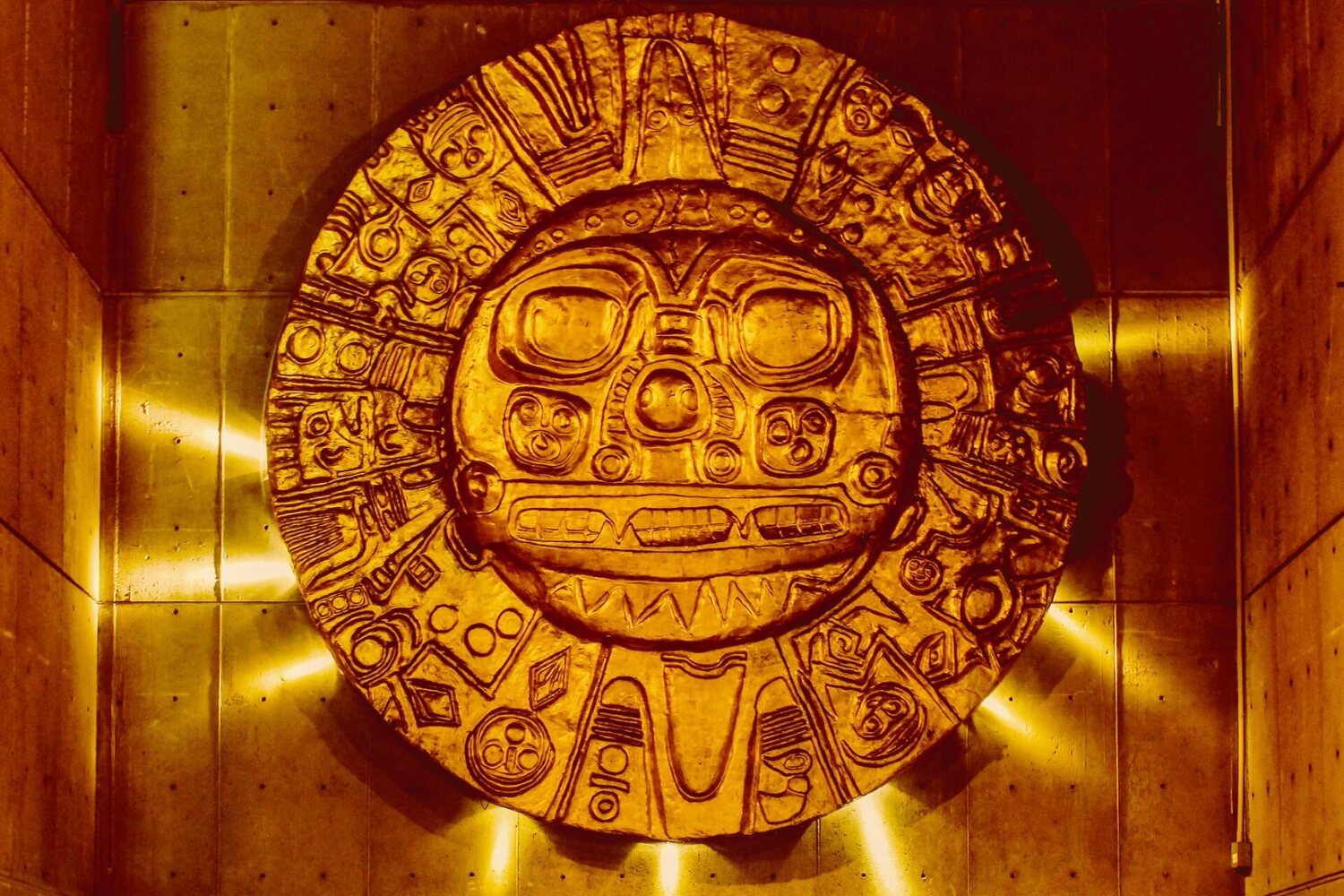
At one point in history, Machu Picchu was considered a lost city. It’s true? It was a sacred place, but not a lost city or a secret refuge. But when the Spanish arrived in Cusco it is said that the ancestors were no longer there: the Incas grabbed all the valuable things from Machu Picchu and went to an unknown place, to Paititi, the ‘golden city’. They burned everything and left. The Inca walls and constructions of Machu Picchu are practically intact except for the roofs, which over the years and abundant rains have been disappearing. Five centuries have passed, how did they do it? The construction of Machu Picchu is a testament to the remarkable techniques the Incas employed. The cultivation terraces (a wide network of stepped platforms) were very important for its conservation because they served as a drainage system, which is why the entire citadel remains intact. And also because of the slight inclination and fit of the walls. It even survived the two earthquakes that occurred in Cusco (1650 and 1950) that destroyed the colonial construction, but not the Inca one.
The Spaniards of the time could not access Machu Picchu with their mules or horses because the emperor Manco Inca had destroyed and raised all the roads that reached Machu Picchu, or at least the most difficult parts to cross, when he retired. , in 1539. In 1572, the Spanish viceroy Francisco de Toledo ordered land to be distributed to 52 families transferred from the eight parishes of Cusco, for the creation of the city of San Francisco de Victoria. The last descendant, now elderly, abandoned the lands and the town. That is why between 1849 and 1911 there were no people living there. In all those years giant trees grew. That’s why Bingham found an abandoned town that remained intact behind those trees.
Once the men and women of high political or religious rank Moria, the pre-Hispanic peoples had learned to preserve their bodies through the technique of mummification, a first step was to bathe the body with aromatic herbs such as Arrayan, Markhu, Molle and Muña. Subsequently, all the internal organs were removed. And with the help of some salts and powders made with minerals, it was passed throughout the body, to prevent corrosion of soft tissues. This already prepared body was placed in a basket in the typical fetal position, then taken to an enclosure where it was exposed to a bonfire that with its constant heat dried out all the internal fluids. This process was carried out very carefully, applying from time to time when layers of chili and salt, to accelerate dehydration. After more than 3 months, the mummified body was dressed with the funerary trousseau and clothing that the emperor would have worn in life. In his royal palace, his entire family paid him attention, and in the most important festivals such as Inti Raymi, they were taken out on colorful litters through the streets of the city of Cusco. The month assigned to the dead was the month of November where these mummies would probably have made their trips to the most important temples and sanctuaries of Tawantinsuyo.
Many researchers initially thought that this Inca city would have been designed to house the mummy of Emperor Pachakuteq, who in his maximum splendor designed and built his royal palace in the jungles of Cusco. This analysis is proposed based on the type of structures found in the most sacred area of Machu Picchu. In the same way, the supposed mausoleum that would be found at the base of the temple of the sun, in fact, is one of the finest architectures with granite blocks, but it could not necessarily have been designed to house the emperor’s mummy. When the first Spaniards arrived in the city of Cusco, they indeed found most of the mummies of the ancient emperors, which were guarded by their royal families, in the palaces of Cusco. When they asked the indigenous people why they cared for him and served food every day as if he were a living person, they responded that their Mallquis or Mummies continued to maintain their power over the territories where they had built their houses and farmlands. Furthermore, for the Incas, death was only a step from physical to spiritual consciousness.
Polo de Ondegardo would have discovered and confiscated almost all the mummies of the deceased Inca sovereigns. The magistrate would secretly bury many of the mummies in Cusco, to prevent the bodies from being exhumed and handed over to the “idolatry” of the natives. But Ondegardo reserved the mummies that were better preserved, or were objects of greater veneration, and sent them to Lima, so that they could be seen by the viceroy and those close to the viceregal court. José de Acosta described it: He saw Pachacutec’s mummy when it was displayed in the Royal Hospital of San Andrés, and he describes it in this way: «The body was so whole and well dressed with a certain bitumen, that it seemed alive. Her eyes were made of a piece of gold, so well placed that she did not need her natural ones, and she had a stone in her head that she received in a certain war. He was gray and had no hair missing, as if he died that same day, having been dead for more than sixty or eighty years… »
It is known that around 1560, the viceroy Marquis of Cañete ordered the embalmed mummies of three or four Incas that had been collected in Cusco to be deposited in the Royal Hospital of San Andrés, in the eighth block of the Huallaga jirón. Apparently, the following arrived in Lima: Viracocha, Huayna Cápac, the coya Mama Ocllo and Pachakuteq. It was not until Viceroy Toledo arrived in 1569, and in response to the constant complaints of the priests of the Catholic religion, who in their role of evangelization felt that their messages were not achieving favorable results, the indigenous people had not submitted to the ceremonies of the Catholic church of those years, and finally they are accused of heresy and witchcraft. And their mummies would be burned and their servants assigned to the service of the new Spanish rulers.
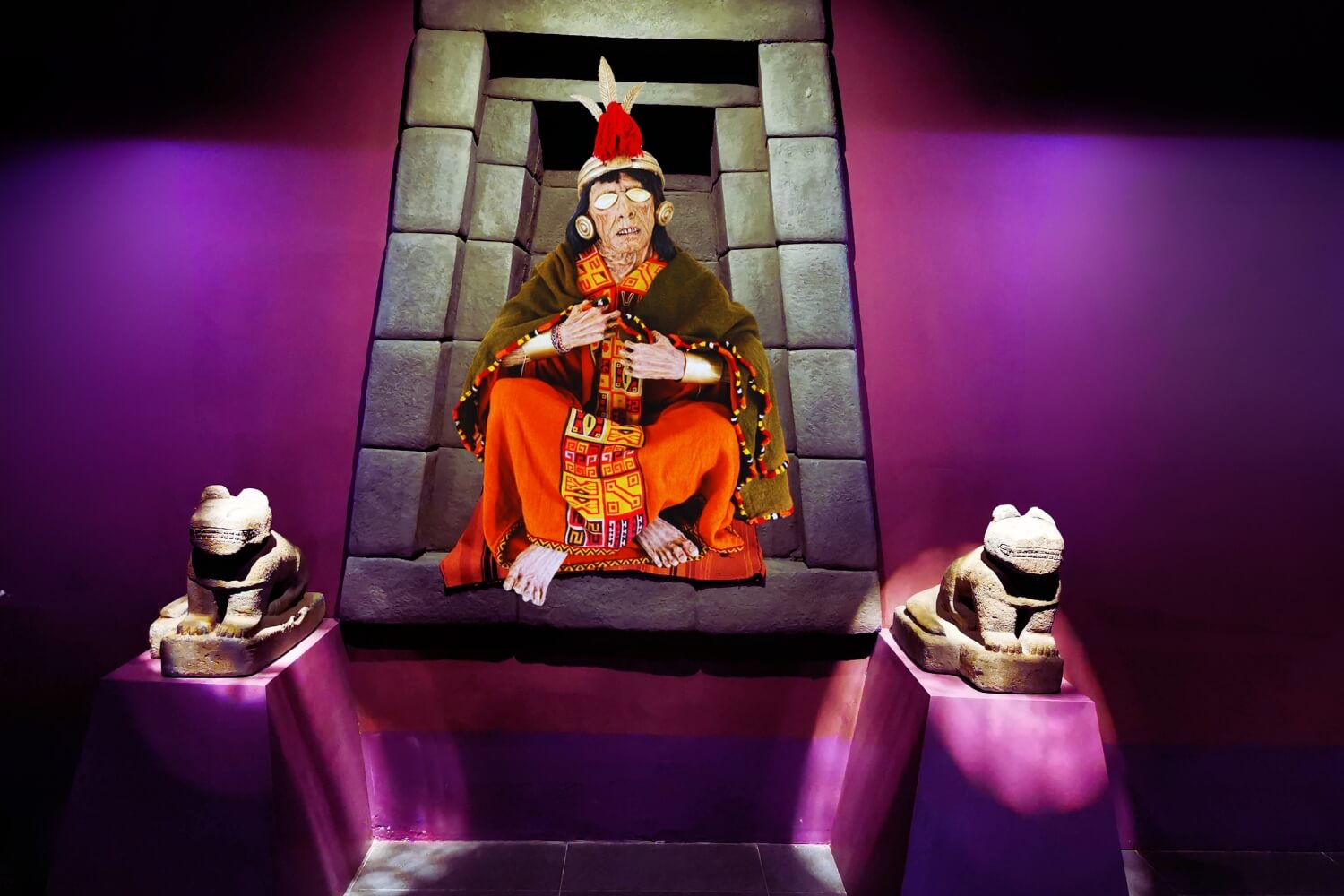
It was a religious, political and administrative center. It is what today would be a provincial capital, whose function was to administer a large territory. It was the link between the Andes and everything that is the high jungle. The site was chosen because of the great diversity of elements that were around. Thus, the tubers and meat of South American camelids were exchanged from the mountains. The jungle gave coca, chonta, medicinal plants. In addition, between six and eight roads reach Machu Picchu, it is a link. It was a religious sanctuary and a space for commercial exchange. The first point is evident in the fact that there are 32 Huacas (sacred sites) there. In addition, the place is surrounded by Apus tutelares and the Pacarina, which is a snow-capped mountain in the Salkantay chain. The second point has to do with the fact that relations were established there between the mountains and the jungle. For example, stone axes and a set of other utensils that were manufactured in the mountains were exchanged for coca, women, exotic bird feathers, tobacco and many other elements from the Amazon. There was a very fluid exchange between both spaces.
In relation to the investigations, much remains to be clarified. Where does ceramics come from? Has ceramics been made in Machu Picchu or has it been taken there? It is already known that metal objects were made there, how did that metal arrive? Was it brought by trade or exploited locally? Likewise, some types of stone found there that do not belong to the site must be investigated. If you are from the Cusco valley or nearby places, there is really a lot left to study. I believe that a pending task is to use new technologies for research, such as microscopic and analytical technologies. The methodology used so far does not explain the archaeological site to us. With modern technology, evidence of the relationships between the mountains and the jungle could be obtained. The places where the products found there come from could also be determined. We could do research regarding the nutrition of the people who lived there based on the analysis of bones, DNA and much more. There is still a long way to go in that regard.

Machu Picchu is its contemporary name, given since its discovery. Machu means old and Picchu means mountain. However, this would not be the name by which the Inca city was known in ancient times. One of the theories around this topic states that the real name of Machu Picchu would be Patallaqta, a word that in Quechua means city in the upper part, a name that would represent it quite well. At the end of the 19th century, the llaqta of Machu Picchu and many of the other archaeological monuments were known to the residents of the Vilcanota valley. In addition, they were visited and in some cases described by travelers and explorers who toured the Cusco territory.
As a product of these trips and explorations, there is cartographic information where the place names Machupicchu and Waynapicchu were recorded, among other geographical features, in addition to some archaeological monuments in the area. It should be noted that none of the maps prior to 1912 indicate precisely the location of Machu Picchu and that its name in all cases refers to the mountain of that name. Likewise, most of the maps presented cover a much larger space, so the focus that has been given is on the area of current Machu Picchu.
The oldest map in which the name Machu Picchu is recorded is by the Italian scholar Antonio Raimondi, who created it around 1865. There he clearly indicates the location of the Machu Picchu hill. From Ollantaytambo, Raimondi took the road that passes through the pass – currently called – Málaga and arrived at Chaullay. The reference to Machu Picchu on his map clearly refers to the hill (Machu Picchu) and not to the citadel. Some years later, as a result of having participated in the preparation of the road from Phiri to the Santa Ana Valley (1872), the German engineer at the service of the Peruvian State, Herman Göhring, published a report in 1877 on said expedition to the valleys of Paucartambo, made in 1873. This report contains the “Map of the valleys of Paucartambo, Lares, Ocobamba and the Vilcanota ravine, 1874”, which indicates, among other places, the location of the “Media Naranja” (Putukusi) mountains, “ Macchu Picchu” and “Huaina Picchu”, with an error regarding the location of the latter as if it were towards the southeast of the former. In the text of the report, Göhring refers to the fortresses of Choqellusk’a, Torontoy and Picchu. This would be the first direct allusion to the citadel of Machu Picchu during the Republican era.
A year later, the Austrian-French Charles Wiener mentions the existence of important ruins in “Huayna Picchu” and “Matchopicchu”, based on information he received in Ollantaytambo in 1875. However, the location of Machu Picchu and Wayna Picchu in Its map corresponds to the mountains and only the location of the current archaeological monuments “Intihuatana” and “Sapanmarca” is indicated. From the above background we can infer that no one will be able to say with certainty what the true name of Machu Picchu was during the time of the Incas. Regarding the word Picchu, it is a term that has been used since colonial times, since currently there is still a neighborhood settlement in the city of Cusco, in the north-western sector, this shows that ethnic groups could have lived in these geographical spaces. who worked in Machu Picchu, and the residents called them Picchus. Connoting the true meaning of this term, it is a word that refers to the sound that sparrows make during the early mornings, which is why it was common to hear mothers say that a young man should get up very early, even before the song of the Pichius. or Sparrows.
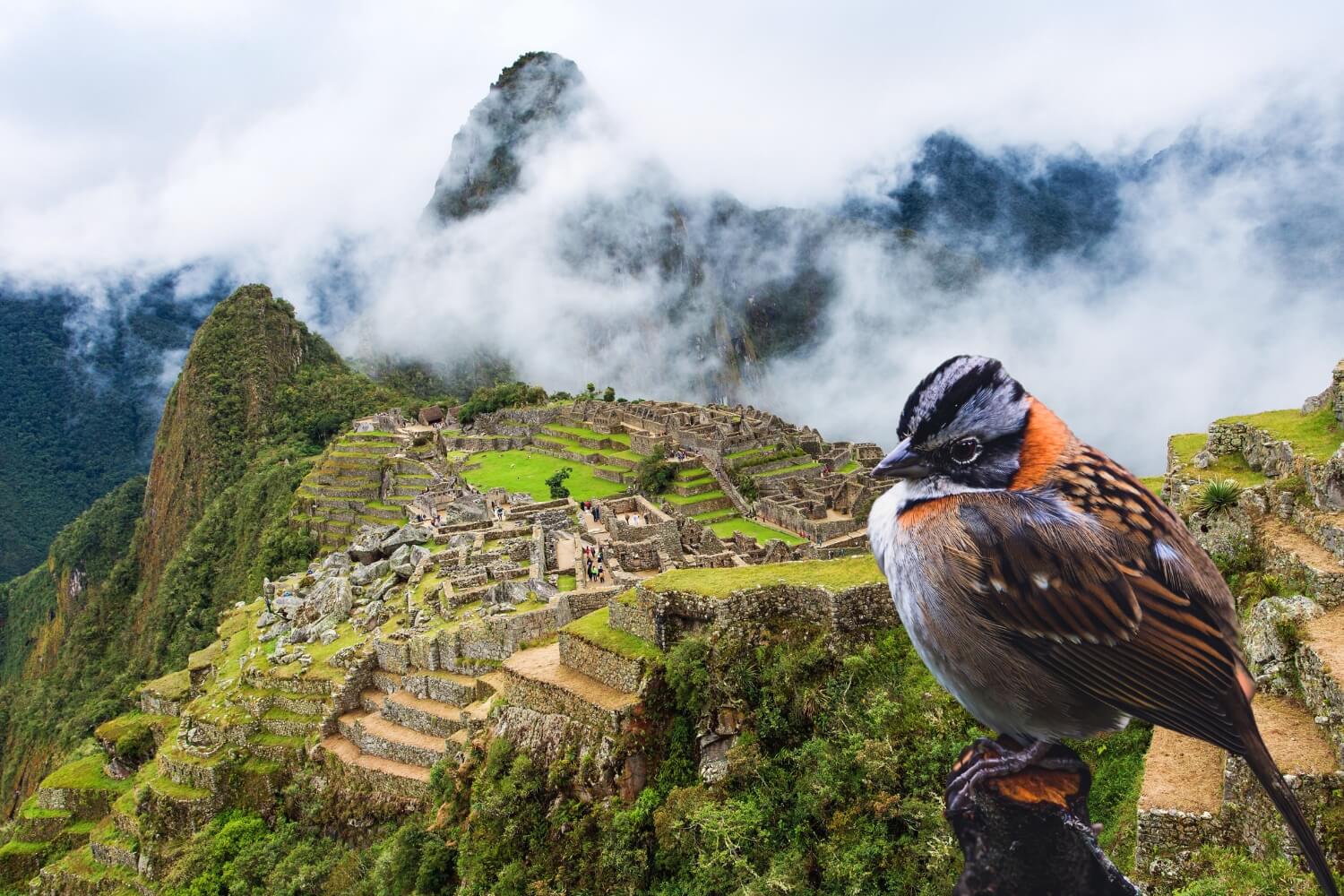
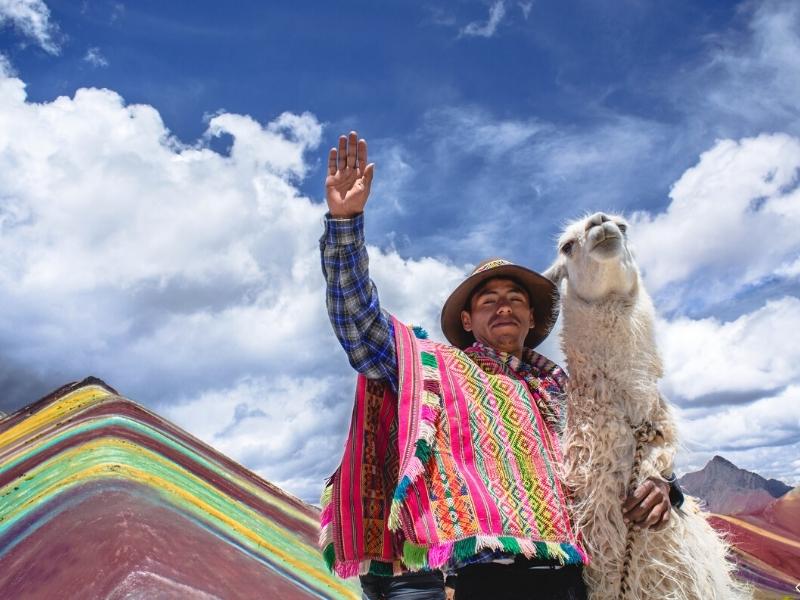
The Ausangate Trek is renowned for its otherworldly natural scenery. It’s considered by many to be one of the world’s best high-altitude treks, the trek takes hikers over several high passes, into low alpine valleys, and through traditional Peruvian villages.
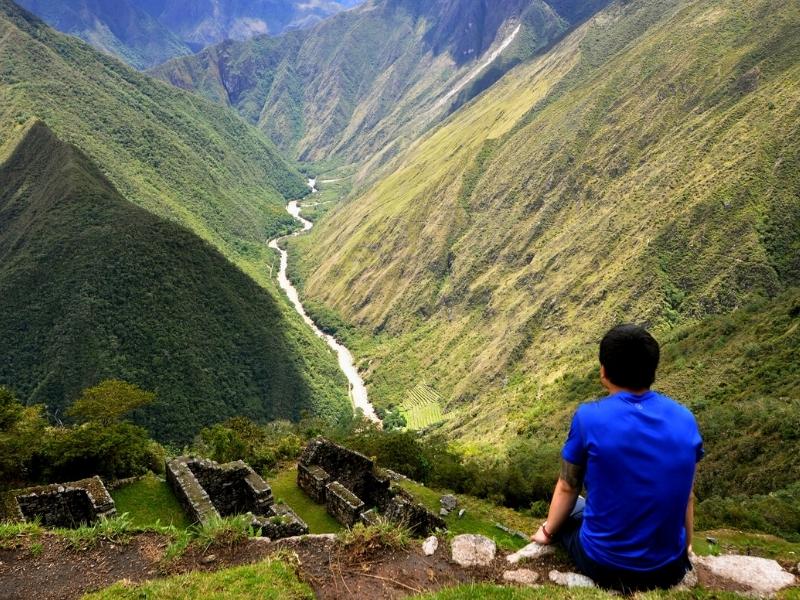
Explore the Manu Amazon Rainforest & Inca Trail hike to Machu Picchu, you will enjoy the best adventures in Peru, exploring amazing inca trail routes and the best amazon wildlife with our local tour guides, in small groups.

Enjoy an incredible vacation, in the heart of the Inca empire, Cusco, our travel program will take you to the most famous tourist attractions of Cusco, such as the Sacred Valley of the Incas, Machu Picchu, in very cozy hotels.

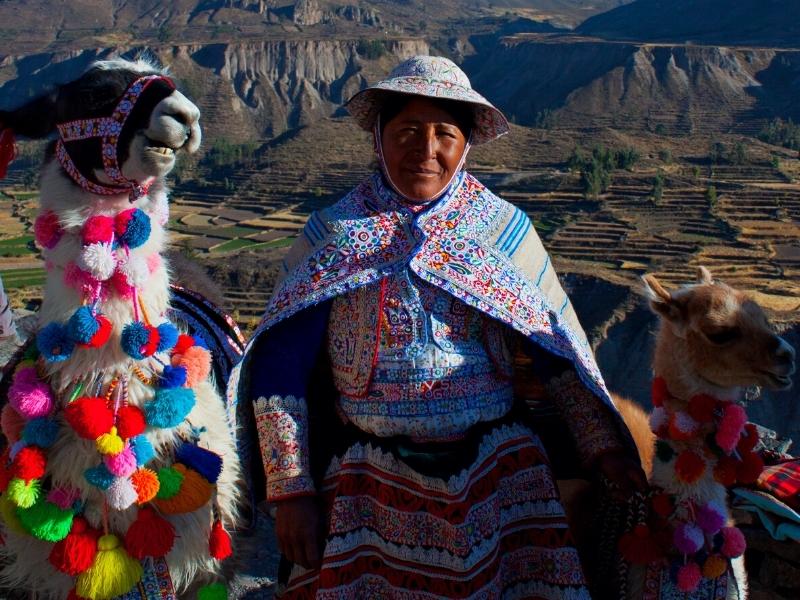
Feel the magic and the energy of Cusco and Machu Picchu, then continue to where the legend began – Lake Titicaca, to get off the beaten path and immerse yourself in the local culture and enjoy the peace and tranquility on the shores of the Lake.

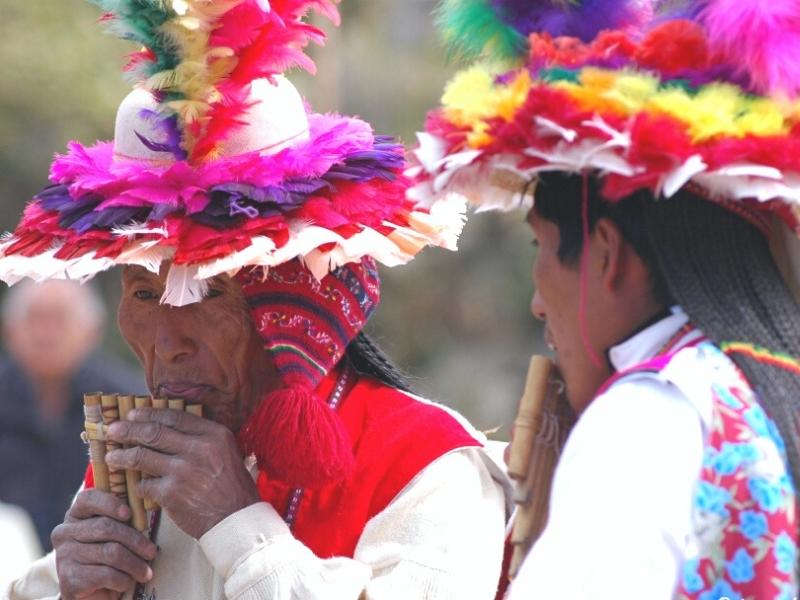
Sublime landscapes, wildlife, history, culture - Peru has more than its fair share. Its famed snow-capped Andean peaks shelter the temples and fortresses of the Inca and other pre-Columbian cultures, linked by a network of paved trails.


The classic Inca Trail hike to Machu Picchu is one of the world's greatest hikes. Along the 45 km you will explore unique andean valleys, lush mountain forest.An exquisite architecture of the Inca sanctuaries, which will dazzle you for its fineness and location within the Andes.